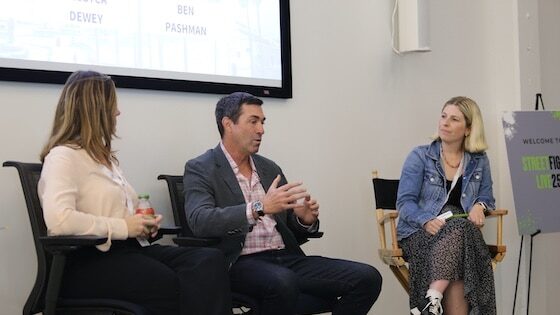As part of the ritual of examining local commerce and SMB Saas strategies, Localogy goes right to the source: SMBs themselves. How do they feel about marketing and operational software? What features do they want? And how has their hunger changed in a pandemic? This is all a moving target.
But as part of that exercise, we sometimes broaden the subject matter beyond traditional SMBs. In the latest Localogy study, done in collaboration with Mono Solutions, we looked specifically at freelancers. Why is this important? The Covid-driven “great resignation” has boosted the freelancer economy.
With that backdrop, who are freelancers and what makes them tick? The report, The Freelance Channel – A Growing Reseller Resource dives in. After examining freelancer attitudes towards full-time work last week, we switch gears to examine the channels through which they find freelance work.
Breaking down the results, the dominant channel is word of mouth (65 percent). That’s followed by freelancing platforms such as Upwork and Fivver (54 percent). Other channels include social media (50 percent), employment agencies (46 percent ) and job boards (44 percent).

Localogy members can access full charts and SMB survey reports. Non-members can purchase reports.
What Does it All Mean?
Going a bit deeper, a few things jump out at us:
– Word of mouth is a logical leader in finding and securing freelance work, given that freelancers may interact in the same social or professional circles (think: graphic designers, programmers, etc.).
– And for businesses, they may trust their freelancers for references of other good freelancers. This is due to a lack transparency and standardization among freelancers and their quality.
– Speaking of standardization, agencies were the third most prevalent channel . This isn’t suprising given that they are a direct connection to businesses (their clients) to ease the burden of finding work.
– Conversely, for employers looking for contract workers, agencies can provide a sort of security blanket in that they’ve pre-vetted candidates and provide some degree of standardization in an otherwise non-transparent market for freelance workers.
– Freelancing platforms like Fivver shine for similar reasons in that they standardize an otherwise unstructured marketplace.
– They outscored agencies, because they are a more modern and streamline version of the service traditionally offered by agencies.
– But though more modern and digital platforms are attractive (just as digital technology has upended all marketplace-based businesses), traditional and “analog” modalities are still dominant.
– These include word of mouth (again, 65 percent) and job boards (41 percent).
– Social media was somewhere in the middle at 50 percent of respondents.
– This presumably skews towards focused and professionally-oriented social platforms like LinkedIn, versus platforms that have have become overshadowed and dominated by political angst (Facebook and Twitter).
Time to Shine
Stepping back, SMB online marketing – website-based or otherwise – continues to grow rapidly. SMB SaaS startups and online services providers are correspondingly thriving as it continues to grow as a leading subsector of the broader SaaS universe. There’s a long-tail opportunity at play.
Meanwhile, new SMB SaaS users could represent permanent adopters – a concept that’s accelerated in the Covid era as SMBs are forced to boost their digital transformation. This sends them into the arms of SaaS providers to accomplish a range of marketing and operational functions.
We’ll return in the next installment to go deeper into Localogy original survey research. That will include SMB goals and success factors. Let us know what additional insights jump out at you from the above data, and stay tuned for more breakdowns in our Benchmark Bytes series.




